| Reviews & Columns |
|
Reviews DVD TV on DVD Blu-ray 4K UHD International DVDs In Theaters Reviews by Studio Video Games Features Collector Series DVDs Easter Egg Database Interviews DVD Talk Radio Feature Articles Columns Anime Talk DVD Savant Horror DVDs The M.O.D. Squad Art House HD Talk Silent DVD
|
DVD Talk Forum |
|
|
| Resources |
|
DVD Price Search Customer Service #'s RCE Info Links |
|
Columns
|
|
|
La Roue
THE MOVIE:
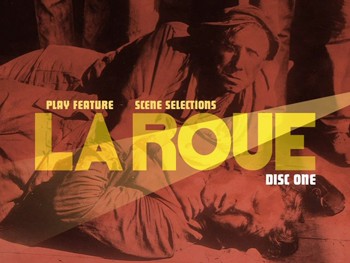
These days, if you mention that a film is over two hours long, you're likely to receive moans and eye rolls in response. We all accept as fact that movies should be somewhere between 90 and 120 minutes, and except in rare cases, any more is excess. (And by "we," I don't really mean "me." I'm merely being diplomatic.) This would all be well and good if these numbers were some kind of real indicator of what is inherently right in the art form, as opposed to a length cooked up for economic reasons. Shorter films mean more screenings in a day mean more ticket sales.
So, if people get all bent out of shape when you mention The Assassination of Jesse James by the Coward Robert Ford is 160 minutes, to name a recent example, imagine how they reacted to me when I told them I was watching a French film called La Roue that was 270 minutes. And was made in 1923. Which means it's silent. One person pityingly eyeballed me across the internet and typed, "I don't know how you do it."
Well, when a movie is of the quality of La Roue (The Wheel), it's actually pretty easy. Still, if you think that's tough, keep in mind that writer/director Abel Gance (J'accuse, Napoleon) originally released the movie with a running time clocking in over eight hours, which was then quickly shortened to somewhere over the five-hour line. This new double-disc DVD gives us a cut that is about four-and-a-half hours, which is nearly complete as far as the official theatrical cut is concerned. It's the most complete we've seen of La Roue in a long time, regardless.
The "Wheel" that Gance refers to in his title has multiple meanings. It's the wheel of industry and progress, the wheels that power a train and that steer it, and the ever-turning grind of life. The final circular image that ties it all together is of a procession of celebrating workers dancing, their spinning circle superimposed over the spokes of a railcar wheel. Gance is using the conventions of literary metaphors as his basis for visual metaphors; which is fitting, because like many silent film directors, including D.W. Griffith, G.W. Pabst, and Erich von Stroheim, Gance was approaching this new storytelling medium as if it were a direct extension of the then dominant medium, the novel. The structure and scope of La Roue has as much to do with the prose epics of Victor Hugo and Emile Zola as it does anything coming out of the early days of Hollywood.
Though wide in its telling, the story of La Roue is surprisingly simple. Sisif (Severin-Mars), a train engineer, finds a young girl, Norma, in a train wreck. Realizing that her parents are dead, he takes her from the accident and decides to raise her as his own daughter. Sisif's wife died in childbirth, and Norma will make a good companion for his son, Elie.
Jump ahead fifteen years, and the new family unit has established their own corner of happiness in the world. Yet, since the kids know nothing of Norma's true origins, there is a dark undercurrent in their lives that they can't quite identify. The grown-up Elie (Gabriel de Gavone) builds violins, and during his lonely days working at home, Norma (Ivy Close) is his only companion. Naturally, the two have an unusually close relationship, but one that is stopped from developing any further by the fact that they are siblings. Haunted by what he has done and his own feelings, Sisif is driven to drink, making him all the more susceptible to the scheming of his wealthy boss, De Hersan (Pierre Magnier). Though Norma refuses Hersan at first, Sisif's decline forces her to take his proposal of marriage, a move that destroys both father and son. Especially once the truth comes out, and Elie realizes that he could have had the love of his life all along.
Like many silent film directors, Abel Gance was visually inventive, and his expressive storytelling more than makes up for scenes that maybe meander a little long or overstate their point (some of his frantic editing draws out the tension to a nearly unbearable fever pitch). He shoots much of the picture on an actual railyard, showing the grime of the work and the majesty of the machines. This lends a real heft to the social commentary about the exploitation of workers that runs through the Sisif and Hersan relationship. It also works as an excellent contrast to Elie's vocation. While dad works with big, heavy machines, Elie creates delicate, precise instruments. Sisif's fantasy life is likewise grounded in the everyday, and when he tries to dress up or put on airs, it's comical, whereas when Elie spins fantastic tales for Norma, Gance adorns them in period costumes and shows the fairy tale they imagine themselves in as a complete whole.
To add even more to the fantasy elements, Gance also employs early special effects. The most common is superimposing one image over another, such as Norma appearing as a ghostly image in the smoke rising from Sisif's locomotive or the very clever device of one's future appearing in the center of one's hand during a palm reading. The most impressive special effect, though, is not an effect at all, but the real panorama of icy mountains that Gance shoots for the second half of the picture. After Norma's departure, events tumble down and Elie and Sisif are exiled to the wilderness, where Sisif is forced to drive a funicular car up and down the mountain. Gance isn't afraid to pause and take in the vast and chilly scenery. Even today, with all of our technology, there is nothing that can compete with shots of the real thing.
A glacier in the middle of a mountain range is a fitting locale for the end of La Roue, as it drives home how small Sisif and his clan are in the grand scheme of the world. As the wheel keeps turning and time marches forward, so too does human suffering. In many ways, La Roue is a tragedy, full of lost love, missed opportunities, and the cruelty of an unbalanced social order. Yet, it's also hopeful. Progress may threaten to crush Sisif, but he also passionately loves his trains, and they sustain him. In his way, he finds that just as he must always keep the engines running, he must also keep moving forward in life. It may be routine, but you can't let it stop, you can't give in. Through this, he and his family do find their happiness at the end, knowing that no matter how bad their situation got, they always found their way back to their home station.
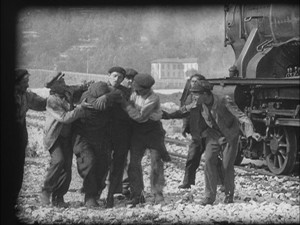
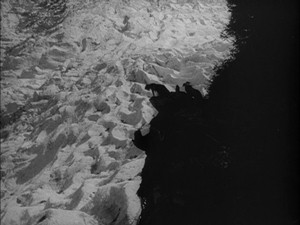
THE DVD
Video:
La Roue is a full-frame presentation, and given the age and scope of the picture, the DVD producers have done a tremendous job resurrecting it. Notes that come with the booklet in this release detail how this version was cobbled together using a variety of sources, and though the print is not perfect, it's clear they went out of their way to use the best material for each scene. There is some noticeable wear and tear, usually seen as surface scratches and sometimes spots and burns in the film, but these problems are usually minimal and the image quality is always clear. Very rare scenes have tremendous damage, and even they are still perfectly watchable. Surprisingly, the picture never gets jumpy, and even splices are clean. Undoubtedly, the people involved gave their every attention to making this the best it could be.
The picture is black-and-white, but tinted with various changing colors, as well. It's only by some weird coincidence that all of my screengrabs are the standard gray.
Sound:
One stereo sound mix is available, featuring the new score by Robert Israel. Israel uses a full orchestra, as well as the occasional integrated sound effect, and the audio is excellent, using the different speakers to give the work a large atmosphere. It's a good score, never overbearing even as it enhances the onscreen action.
New English title cards were produced for this edition, and they also include some effects, like the delayed appearance of a closing line of a sentence to add drama. There are also occasional passages that appear over the top of the scene like subtitles, and if written words appear as part of the props, such as a letter, there are smooth fades from the French text to English translations. All of the text is easy to read, staying on screen for the right amount of time to allow proper digestion.
Extras:
Only a couple of extras here, this two-disc set is mostly movie. The one that surprised me the most was "Autour De La Roue," a period behind-the-scenes documentary that collects over eight-minutes of on-set footage, put together like its own silent movie with explanatory title cards. It's rather fascinating to see a 1920s movie production at work, including shooting on location and with the big trains.
The original press book is also presented as a video feature, with the pages automatically turning after a couple of seconds. The text is in French and given without translation.
Inside the DVD case, which has a hinged tray to accommodate both discs, is a sixteen-page booklet with an essay on the history of the film by William M. Drew and notes from composer Robert Israel.
FINAL THOUGHTS:
A revolutionary and influential film in its day, Abel Gance's Le Roue is a silent film of a particular unassailable vintage. This 1923 melodrama of the railroad has the breadth of a great novel and the tragedy of a classic play. Gance tells the simple story of a train conductor, his son, and the girl he secretly adopted, and the feelings of love and loss that erupt from hiding the girl's true identity from her. Shot on location and with a grand scope that would put even many of today's productions to shame, Le Roue may have a few quaint, rickety scenes, but its emotion and ambition still make a timeless impression. This new two-DVD set restores it to a four-and-a-half hour running time, and uses the best of several print sources to make one good looking transfer. As good cinema, and as one for the history books, we're ranking Le Roue as Highly Recommended.
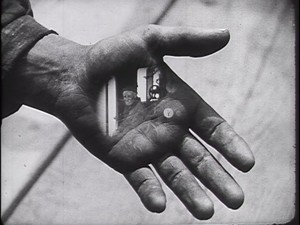
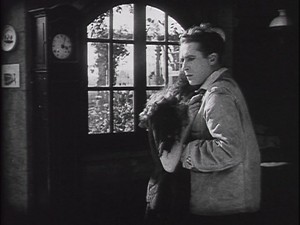
Jamie S. Rich is a novelist and comic book writer. He is best known for his collaborations with Joelle Jones, including the hardboiled crime comic book You Have Killed Me, the challenging romance 12 Reasons Why I Love Her, and the 2007 prose novel Have You Seen the Horizon Lately?, for which Jones did the cover. All three were published by Oni Press. His most recent projects include the futuristic romance A Boy and a Girl with Natalie Nourigat; Archer Coe and the Thousand Natural Shocks, a loopy crime tale drawn by Dan Christensen; and the horror miniseries Madame Frankenstein, a collaboration with Megan Levens. Follow Rich's blog at Confessions123.com.
|
| Popular Reviews |
| Sponsored Links |
|
|
| Sponsored Links |
|
|
| Release List | Reviews | Shop | Newsletter | Forum | DVD Giveaways | Blu-Ray | Advertise |
|
Copyright 2024 DVDTalk.com All Rights Reserved. Legal Info, Privacy Policy, Terms of Use,
Manage Preferences,
Your Privacy Choices | |||||||














